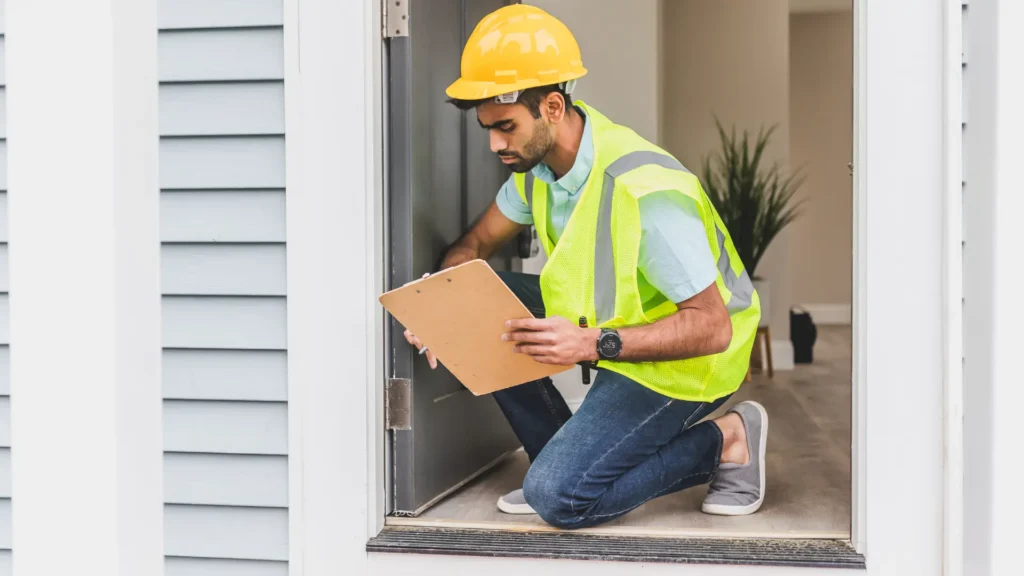For property managers participating in the Section 8 program, understanding the inspection process is crucial. One common question that arises is, “Does Section 8 do random inspections?” In this post, we’ll break down how Section 8 inspections work, whether they are random, and what property managers need to know to ensure their properties are always ready for an inspection. We’ll also explore how NSPIRE standards tie into the inspection process, and how proper preparation can help you avoid costly mistakes.

What Are Section 8 Inspections and Why Do They Matter?
What Are Section 8 Inspections?
Section 8 inspections are part of the Housing Choice Voucher Program administered by HUD. The program ensures that properties participating in Section 8 meet the required standards for health, safety, and livability. Inspections are conducted by local Public Housing Authorities (PHAs) to ensure compliance with NSPIRE standards (National Standards for the Physical Inspection of Real Estate).
To learn more about NSPIRE standards, check out the NSPIRE Standards page.
The Importance of Section 8 Inspections
For property managers, Section 8 inspections are a vital part of maintaining eligibility for HUD funding. Passing inspections ensures that you continue to receive rent payments from HUD on behalf of Section 8 tenants. It’s essential for property managers to understand when and why inspections happen and how to ensure compliance.

Does Section 8 Do Random Inspections?
Are Section 8 Inspections Random?
No, Section 8 inspections are not random. These inspections are typically scheduled based on several factors, including annual inspections, tenant complaints, and when a new tenant moves into a property. While they may seem unpredictable, the key is understanding the factors that trigger an inspection and being prepared for them.
For more information on Section 8 inspections, visit HUD’s Housing Choice Vouchers Page.
Factors That Trigger Section 8 Inspections
Section 8 inspections are triggered by:
- Annual Inspections: Most Section 8 properties are inspected annually to ensure they meet NSPIRE standards.
- Tenant Complaints: If a tenant reports issues related to safety or maintenance, this may trigger an inspection.
- Move-in Inspections: When a new tenant moves in, an inspection ensures that the property is compliant before they occupy it.
- Random Spot Checks: While not common, some PHAs may conduct spot checks for properties that have been flagged for issues in the past.

What Happens During a Section 8 Inspection?
Key Areas Inspectors Look For
During a Section 8 inspection, HUD inspectors will assess the property’s compliance with NSPIRE standards. Common areas checked include:
- Safety and Habitability: Fire exits, smoke detectors, handrails, etc.
- Plumbing: Leaks, water pressure, water heater condition.
- Electrical Systems: Wiring, outlets, and proper functioning.
- General Maintenance: Condition of walls, floors, windows, and doors.
Understanding these areas will help property managers prepare for the inspection. For a deeper dive into the NSPIRE inspection process, refer to our post on What is the NSPIRE Scoring Methodology?.
How to Prepare for Section 8 Inspections
Preparing for Section 8 inspections involves:
- Regular Maintenance: Keep your property in good condition year-round to avoid inspection failures.
- Conducting Pre-Inspections: Hiring a professional for NSPIRE pre-inspections can help identify issues before the official inspection, saving you time and money. Learn more about this process here.

How Section 8 Inspections Affect Your Property’s Eligibility
The Link Between Section 8 Inspections and HUD Funding
A failed Section 8 inspection can result in the loss of HUD funding. If the property fails to meet NSPIRE standards, HUD may stop issuing rent payments for Section 8 tenants, impacting your cash flow. Property managers must ensure that their property is compliant with all safety and habitability standards to continue receiving financial support.
To ensure compliance and prevent funding loss, consider NSPIRE pre-inspections and maintain regular maintenance schedules.
How to Handle a Failed Section 8 Inspection
If your property fails a Section 8 inspection, it’s important to address the issues promptly. Start by reviewing the inspection report to identify deficiencies, then make necessary repairs and schedule a follow-up inspection. If needed, you can appeal the failed inspection. For advice on how to proceed after a failed NSPIRE inspection, check out our guide on What to Do After a Failed NSPIRE Inspection.
How Section 8 Inspections Can Impact Tenant Retention
How NSPIRE-Compliant Properties Attract Better Tenants
Properties that pass Section 8 inspections are typically safer, more comfortable, and more desirable to tenants. High NSPIRE scores lead to better living conditions, which can improve tenant satisfaction and increase retention rates. Properties that consistently meet NSPIRE standards are likely to attract high-quality tenants and experience less turnover.
How to Keep Tenants Happy and Satisfied
Regular maintenance, timely repairs, and ensuring compliance with NSPIRE standards will help keep tenants happy, leading to longer lease terms and fewer vacancies.

How to Handle a Failed Section 8 Inspection and Next Steps
What to Do After a Failed Section 8 Inspection
If your property fails a Section 8 inspection, don’t panic. Follow these steps:
- Address Deficiencies: Review the inspection report and make repairs.
- Document Repairs: Ensure you have evidence of the work done, including photos and invoices.
- Schedule a Re-Inspection: Once repairs are completed, request a follow-up inspection.
If you’re unsure of how to handle the re-inspection process or need professional help, consider scheduling a NSPIRE consultation.
How to Appeal a Failed Section 8 Inspection
If you disagree with the inspection results, you can appeal. The steps typically involve reviewing the report, gathering evidence of compliance, and submitting an appeal to the relevant HUD office. For assistance with appealing a failed Section 8 inspection, consult our NSPIRE consultation services.
